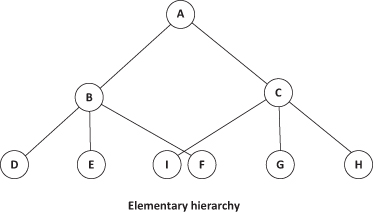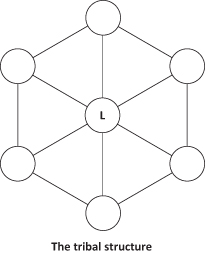Six Greatest Ideas for Organizational Communication
Idea 90: Organizations are communication systems
The first function of the executive is to develop and maintain a system of communication.
Chester Barnard, US business executive and management expert
Large human organizations are rarely created at a stroke of the pen. They tend to evolve organically from working groups or teams, which in turn come about through the leadership of one or two people.
A team is an organization in microcosm. It is a whole made up of interdependent parts, each with its proper function, evolved to achieve a purpose that one person could not attain alone or unaided. The ‘parts’ in this case are other individuals. In an organization, the ‘parts’ are themselves teams or work groups.
Often organizers out to bring order to relative chaos do have some predetermined scheme in mind, such as at the military system. But the military system merely reflects a more primitive or natural method of social ordering in large groups, which can be expressed as a simple model:

In a Bedouin tribe, for example, the sheikh pitches his tent in the middle and keeps an open door to all-comers. Members of the tribe are essentially free and equal, although in larger tribes there are subgroups of families or kin. Yet all have the right to take complaints or problems to the paramount sheikh for arbitration or solution.
Originally we were all tribal and the tribal tradition has been deeply influential. For example, being essentially egalitarian, tribal life was a direct ancestor of democracy. Why, then, did hierarchical organization emerge? One reason was the sheer size as tribes multiplied into nations that called for hierarchical organization. The other reason was military necessity. Armed tribal hordes turned into disciplined armies only so far as they were willing to accept the principle of hierarchy. The Roman army is still the copybook example or model of a very large organization.
In the elementary hierarchy diagram, A has overall leadership responsibility. The team leaders – D, E, F, G, H and I – report directly to B and C, who report in turn directly to A. All the elements of hierarchy are here. We have some rather cumbersome Latin-based words – subordinate, coordinate and superordinate – to describe where people come in the structure or order thus created:
- Subordinates – B and C are subordinate to A; all the others are subordinate to B and C as well; and the team members in each of the six groups are subordinate to their leaders, and all above.
- Coordinates – B and C are coordinates with each other, as are D, E, F, G, H and I. Team members are also coordinates within teams.
- Superordinates are all named leaders, A being the ultimate superordinate at the top of the pyramid.
Notice that hierarchy runs counter to tribal life, where people are on the same level as their leader and there are no interpositions of other levels. The tribal structure looks more like this:

The best way, in summary, is to look on your organization as essentially an orderly communication system, or set of systems, designed to get things done in the right way and at the right time. Always bear in mind the two-way directions or flows where the channels of communication need to carry clear and full water: downwards, upwards and sideways.
